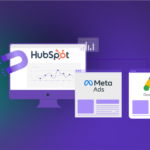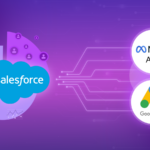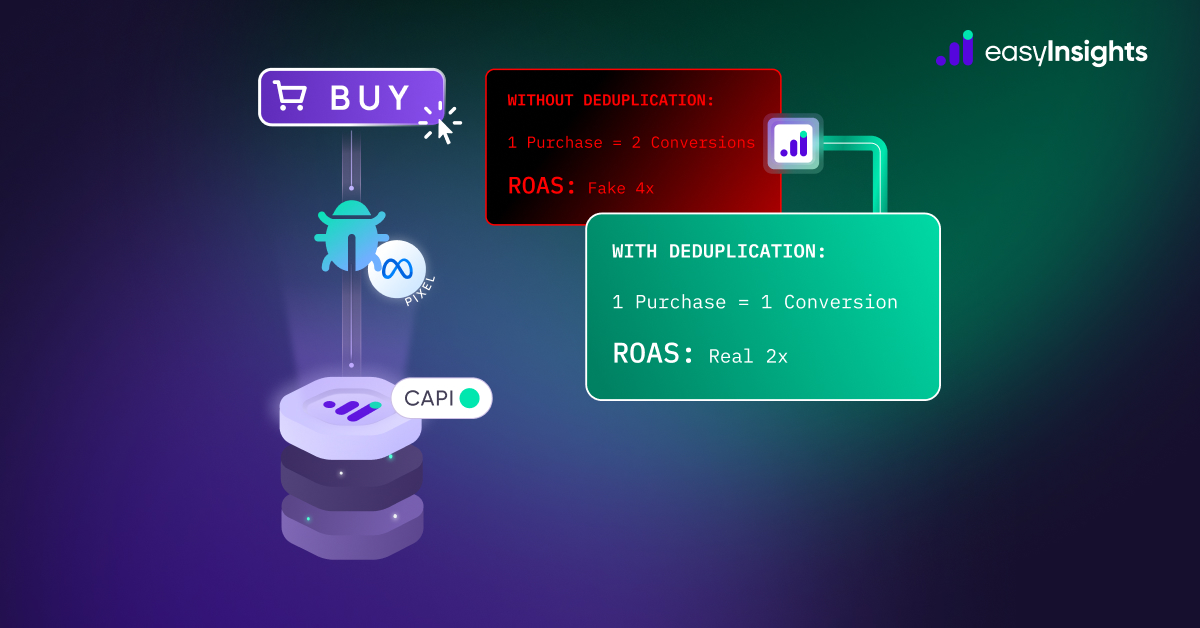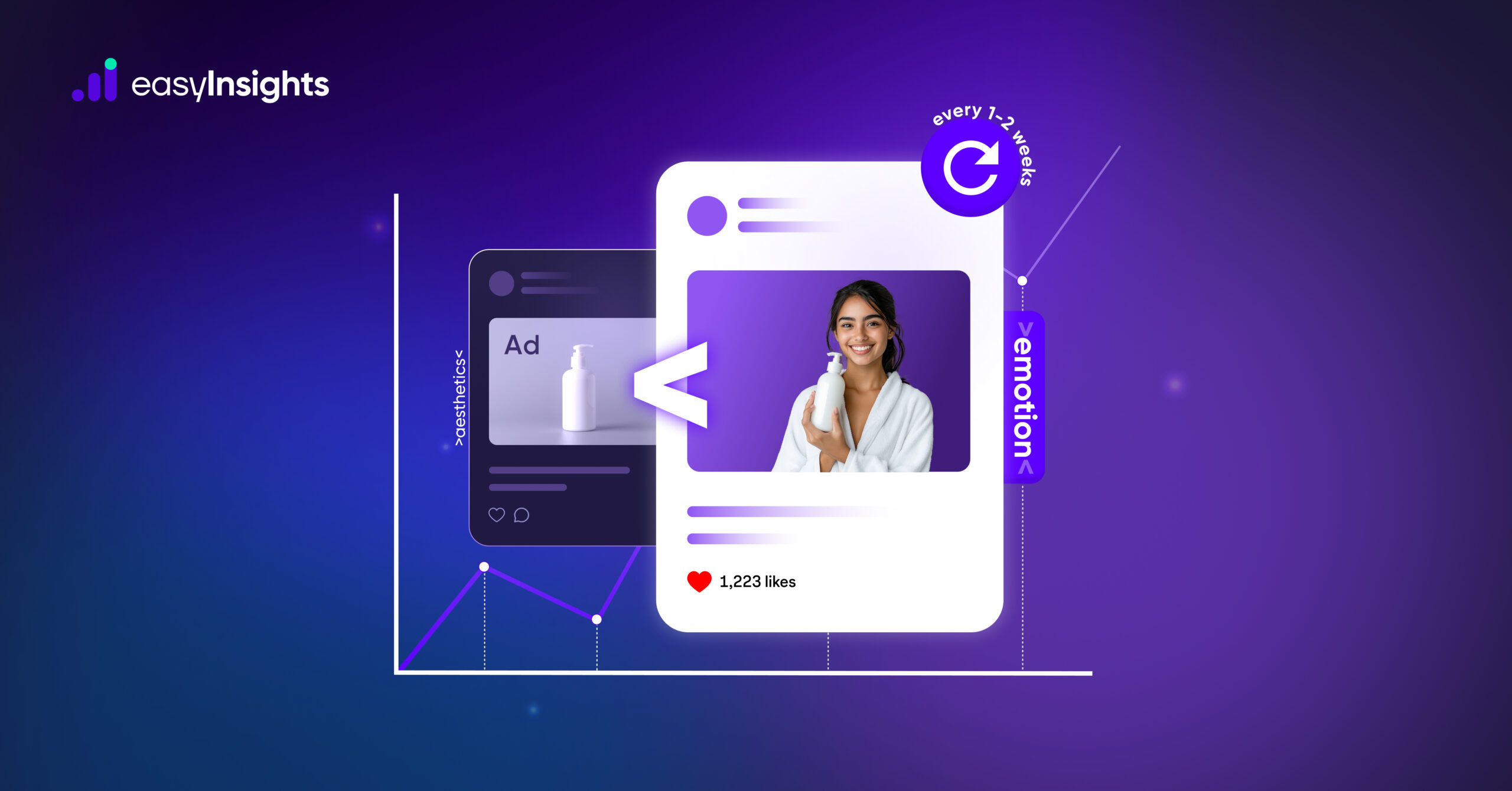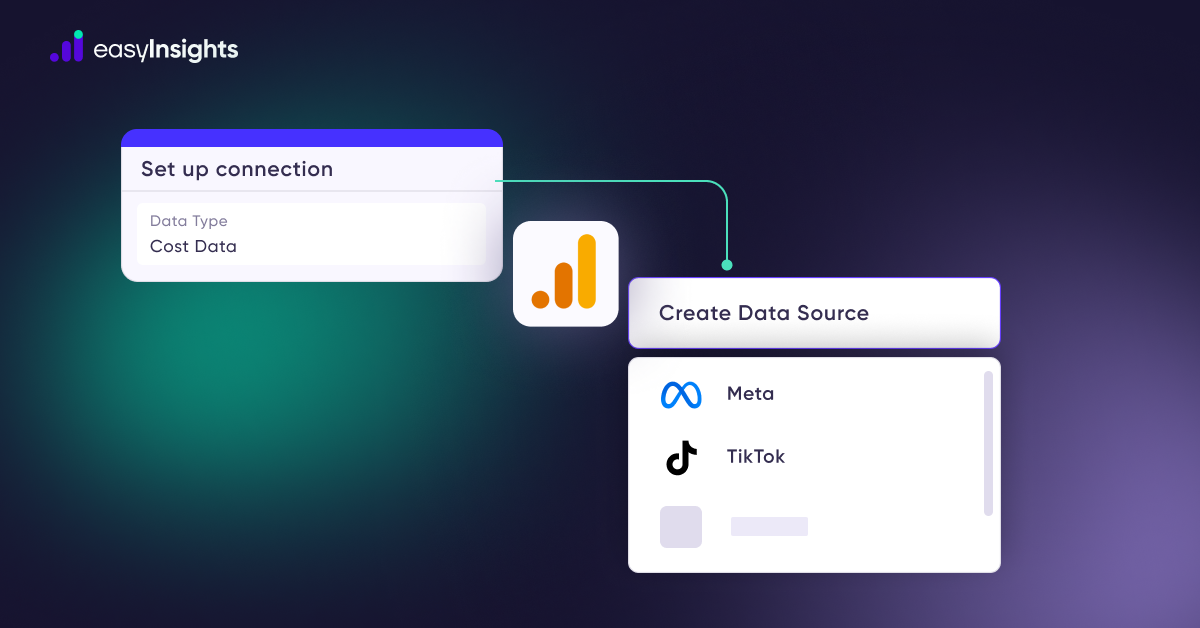
If you’re running performance campaigns on Meta, you already know the platform provides a wide array of metrics – from ROAS to CTR to conversion value. But Meta has just introduced something new: Opportunity Score.
This isn’t just another metric, it’s a powerful new signal that can help you uncover optimization opportunities hidden in your campaigns. In this article, we’ll break down what the Opportunity Score is, how it works, and how you can actually use it to improve performance without chasing a perfect score just for show.
Jump ahead to:
What is an Opportunity Score?
Opportunity Score is a 0-100 metric that reflects how well-optimized your campaigns, ad sets, and ads are based on Meta’s own best-practice recommendations. The higher your score, the more of these recommendations you’ve applied.
Unlike traditional metrics that reflect outcomes like ROAS or CPA, Opportunity Score is prescriptive. It tells you what you could do better – not what you’ve already achieved.
Meta evaluates your – Campaigns, adset, ad and scores them based on the number and impact of applied recommendations. The more you implement, the higher your score.
Where you can see your opportunity score
You can view your Opportunity Score at the top of the Account Overview section.
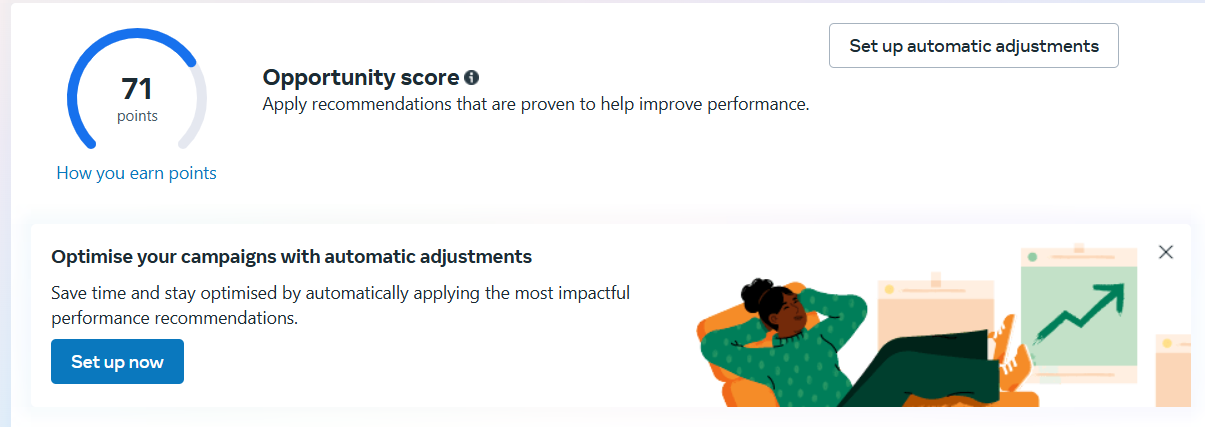
You can also view in the campaign manager section
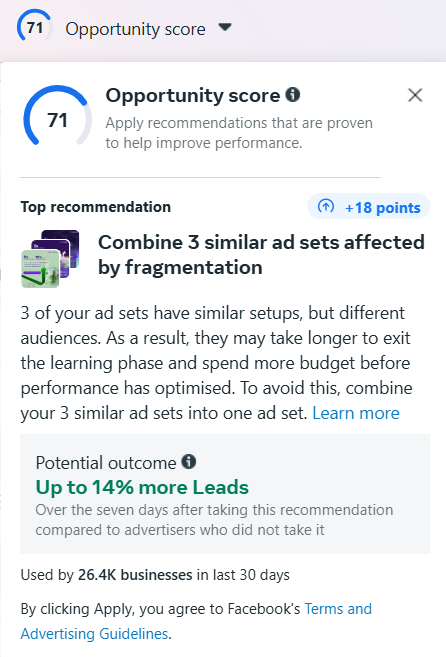
Does Opportunity Score improve performance
Not Necessary
Your Opportunity Score reflects how effectively you implement delivery recommendations. However, a high score doesn’t always mean your campaign is performing at its best, and a low score doesn’t necessarily indicate poor performance.
Meta itself says that – Opportunity score (including a high score) itself does not reflect your actual or future performance. Should you choose to apply all or some of the recommendations, then the applied recommendations can help improve performance over time but this isn’t guaranteed. Actual performance depends on many factors, such as market dynamics. Opportunity score is in development and may evolve. (source)
What does opportunity score recommendation include
Fixing audience fragmentation- Audience fragmentation happens when your target audiences are split across multiple overlapping or very narrow segments. This can cause Inefficient budget distribution, Higher CPMs due to competition between your own ad sets.
Enabling Advantage+ placements – Advantage+ Placements also known as Meta to serve your ads across all available surfaces including it helps to Distribute your budget across placements where conversions cost the least, Increase delivery efficiency, Avoid over-indexing on expensive placements like Instagram Feed or Facebook Feed only.
Correcting Errors or Delivery Issues – Meta will flag any structural or delivery errors that might be preventing your ad from running or performing efficiently. These include:
- Disapproved ads due to policy violations
- Ads stuck in “Learning Limited” due to low event volume
- Budgeting issues (e.g., daily cap too low)
- Audience overlap
- Pixel misfires or missing conversion events
Using Automatic Targeting or Budget Tools – Meta offers several automation tools like:
- Advantage+ Audience: Let Meta expand targeting if it helps performance
- Campaign Budget Optimization (CBO): Let Meta auto-distribute budget across ad sets
- Advantage+ Shopping Campaigns: End-to-end automation for ecommerce objectives
Utilizing Creative Enhancements – Creative Enhancements are AI-powered tools that improve your ad creatives using features like:
- Auto-generated text variations
- Image cropping for placements
- Dynamic templates for multiple headlines or calls-to-action
- Video enhancements (subtitles, layout optimization)
Here’s what you need to know –
- Not all recommendations are equal – Meta weights them based on estimated performance impact depending on your campaign setup, vertical, budget, and historical data.
- Scores don’t always update in real time, especially if multiple errors are present.
- Dismissing a recommendation won’t hurt your score – but it won’t help it either.
- A low score ≠ poor performance – it just means there’s optimization potential Meta wants you to explore.
How to Use Opportunity Score
- Don’t blindly implement every recommendation. Consider your specific business goals, target audience, and advertising strategy.
- Meta’s recommendations are based on broad data and may not always align perfectly with your unique circumstances.
- Focus on the recommendations that seem most relevant to your goals and have the potential to drive meaningful improvements in your results.
- If you decide to implement a recommendation, monitor your campaign performance closely to see if it has the desired effect.
- Advertising is an iterative process. Be prepared to test different approaches and adjust your strategy based on the results.
- If your campaigns are underperforming, checking the Opportunity Score can be a useful starting point for identifying optimization opportunities.
Use case
Let’s say your Opportunity Score is currently at 60. This score represents how well you’ve adopted Meta’s optimization recommendations. Now, if your campaign has fragmented audiences it means that your audience is split into too many segments. Fixing this issue could significantly improve your score. By addressing audience fragmentation, Meta estimates that your score could increase by 35 points, bringing it up to 95.
Additionally, implementing Advantage+ placements, which allow Meta to automatically place your ads across multiple platforms and formats for better reach and efficiency, might add another 5 points to your score. When both of these optimizations are applied together, your total Opportunity Score would reach 100, indicating that you’ve fully incorporated Meta’s recommended best practices.
While reaching a score of 100 doesn’t guarantee success, it suggests that your campaign is structured in a way that maximizes its potential based on Meta’s extensive data and algorithms.
Pro tip – Instead of striving for a perfect Opportunity Score just to reach 100, prioritize the recommendations that truly align with your business objectives, marketing funnel stages, and creative strategy.
For example, if a recommendation suggests broadening your audience but your strategy relies on niche targeting, blindly following it may not be the best move.
Similarly, your funnel stage matters. A top-of-funnel brand awareness campaign will have different optimization needs compared to a bottom-of-funnel conversion campaign. Certain suggestions might make more sense at one stage than another.
Conclusion
Audience segmentation is essential for improving ad targeting and increasing campaign performance.
EasyInsights offers powerful audience segmentation capabilities, enabling brands to categorize users based on various parameters such as behavior, demographics, purchase history, and engagement levels. Additionally, EasyInsights allows you to update real-time audience data in your CRM, enhancing ad performance through precise targeting and ultimately improving ROAS.
Book your demo today with EasyInsights
Additional read – Meta (Facebook) & Google Analytics (GA4) Integration


